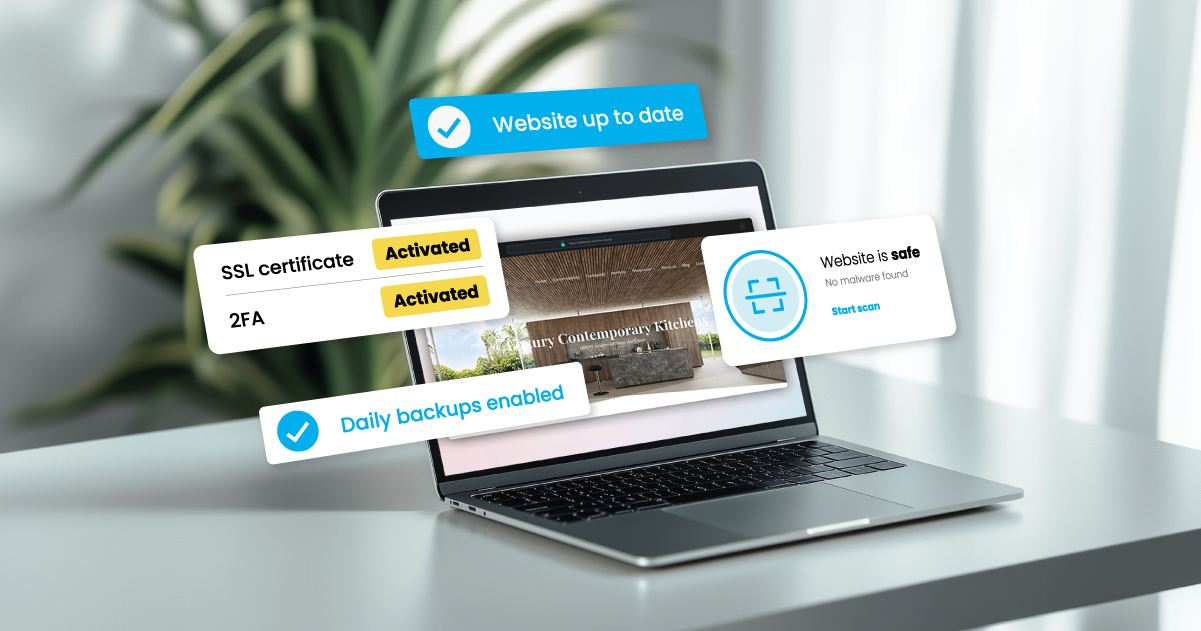Did you know...?
What does SEO actually stand for?
SEO stands for Search Engine Optimization. In other words, you structure and maintain your website so that it is easily found and ranked by search engines such as Google, Bing or Yahoo.
In short, SEO makes your site the favorite of search engines.
1. Keywords are key
2. Quality content
3. Mobile compatibility
4. Fast loading time
5. Clear URL structure
6. Use meta tags
7. Links to external content
8. Quality backlinks are precious!
9. Avoids keyword stuffing
10. Beware of keyword cannibalism
1. Keywords are key
Keywords are terms and phrases that users enter into search engines. Find out which terms your target audience uses and integrate them naturally into your texts. But don't overload your content with keywords. Your texts must remain fluid and natural.
Let Google inspire you when choosing your keywords: compare your competitors' websites and searches. This will help you find other important keywords to include in your texts and titles. <a href="https://trends.google.ch/trends/?hl=en-US"Google Trends can also help you compare keyword popularity.
2. Quality content
Write interesting, informative and useful content. Google loves sites that add real value for users. Update your content regularly and make sure it's relevant and unique. Avoid copying text from other websites.
These days, many programs with AI integrations can help you create texts. However, it's important to check that the facts are correct and that the text structure is readable.
Your keywords should also appear directly in the page title, from the URL or the headings in H1-H2-H3 titles. Pages that are relevant for the search engine should have a minimum number of 250 words, from around 2000 words your complete article is considered a successful web text for Google.
3. Mobile compatibility
Your website should look just as good on smartphones and tablets as it does on desktop. Google prefers mobile-optimized pages because more and more people are accessing websites on their cell phones. With our website builder, your website is instantly mobile ready.
But even with the WordPress content management system, you have the option of testing the mobile suitability of your website and improving it directly in the mobile view. Popular plugins such as WPTouch, JetPack or Hummingbird can help with this.
4. Fast loading time
Nobody likes slow websites - especially search engines. Make sure your site loads quickly. Reduce large images and regularly check the performance of your content with a tool like PageSpeed. Here you will also find tips on how to help your website load faster. For example, it can help provide images in suitable formats, compress JavaScript or activate text compression. The Pagespeed tool analyzes your website and presents you with the most important tips directly.
5. Clear URL structure
Use clear and understandable URLs. These are the links that refer to your subpages. You can easily name them yourself in our Website Builder. WordPress also has the option of renaming the domain link under “Link”. This not only makes it easier for people, but also for Google, Bing, Yahoo and other search engines. By placing meaningful keywords in the URLs, your pages will rank better within a short time.
6. Use meta tags
Use title tags and meta descriptions to tell search engines (and users) what your page is about. The page title is the most important meta element and is displayed as a clickable link in search results. It should be clear and precisely describe the content of the page, with a length of 50 to 60 characters. The meta-description is a short summary (150 to 160 characters) that also appears in search results and should entice users to click.
7. Links to external content
Insert links to other relevant sites (including those of friends or partners in the same field). This helps visitors and search engines to better understand and navigate your site. Two or three well-placed external links, pointing to reliable articles or blogs, show search engines that you've done your research and that your content is top-notch.
8. Quality backlinks are precious!
Backlinks are links from other sites to your articles. They are like recommendations that show Google that your site is trustworthy and important. To get quality backlinks, create interesting content. Contact partners to offer guest articles and promote your site through collaborations with other bloggers or site managers.
9. Avoids keyword stuffing
Keywords are important, but they must be integrated naturally into titles and descriptions to avoid over-optimization. If you insert a keyword like “shiatsu practice” ten times in a short paragraph, the search engine may detect it and penalize it.
Thanks to online tools, you can quickly and easily check whether a text flows! DeepL Write, for example, is an excellent tool with which you can adapt formulations to give your text greater impact.
10. Beware of keyword cannibalism
Keep in mind that each page should provide unique content. No page should reflect the same content twice. This also applies to keywords. In a good sitemap, you can structure which page should be optimized for which keyword and avoid keyword cannibalism.
SEO may seem like science at first glance, but with a little practice and patience, you'll soon see that it's also a lot of fun to optimize your website. And as a reward, your site's ranking will improve! Now that you know the basics of SEO, you can get started. Further tips are available directly on Google. Good luck!






